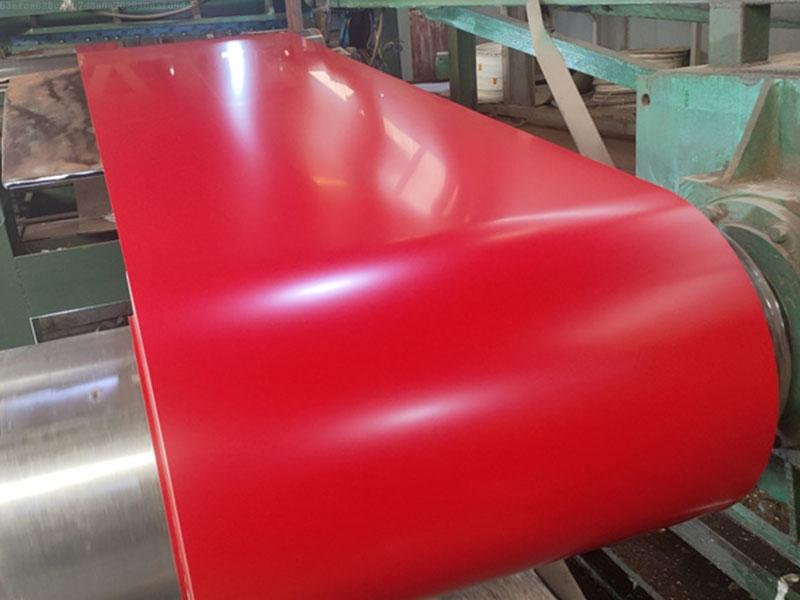
Introduction
Prepainted galvanized steel coil is a marvel of modern engineering and manufacturing. This versatile material is used in a variety of applications, from construction and automotive to household appliances and furniture. But how is it made? In this blog, we’ll take you on a fascinating journey through the manufacturing process of prepainted galvanized steel coil. You’ll learn about the raw materials, the intricate steps involved, and the final product that emerges ready for various industrial uses.
The Basics: What is Prepainted Galvanized Steel Coil?
Before diving into the manufacturing process, it’s essential to understand what prepainted galvanized steel coil is. Essentially, it is a type of steel that has been coated with a layer of zinc to prevent corrosion and then painted with a protective and decorative layer. This combination of galvanization and painting makes the steel coil highly durable and aesthetically pleasing.
Raw Materials: The Foundation of Quality
The journey of prepainted galvanized steel coil begins with high-quality raw materials. The primary materials include:
- Steel Coil: The base material, typically cold-rolled steel, provides the necessary strength and flexibility.
- Zinc: Used in the galvanization process to offer corrosion resistance.
- Paints and Coatings: Various types of paints and coatings are used to enhance the appearance and protect the steel from environmental factors.
Step-by-Step Manufacturing Process
1. Steel Coil Preparation
The process starts with preparing the steel coil. Cold-rolled steel coils are cleaned to remove any impurities, oils, or residue that could affect the quality of the final product.
2. Galvanization
The cleaned steel coil undergoes the galvanization process, where it is coated with a layer of zinc. This is typically done using the hot-dip galvanizing method, where the steel is submerged in molten zinc. The zinc layer provides excellent protection against rust and corrosion.
3. Surface Treatment
After galvanization, the steel coil is subjected to surface treatment. This step involves applying a chemical treatment to improve the adhesion of the paint and enhance the corrosion resistance of the zinc layer.
4. Primer Coating
The next step is applying a primer coating. This layer acts as a base for the final paint layer and provides additional protection against corrosion. The primer is usually applied using a roller coating method, ensuring an even and consistent layer.
5. Top Coating
Once the primer has dried, the top coating is applied. This is the final paint layer that gives the prepainted galvanized steel coil its desired color and finish. The top coating not only enhances the aesthetic appeal but also adds an extra layer of protection.
6. Curing
After the top coating is applied, the coil undergoes a curing process. This involves heating the coated coil to a specific temperature to ensure the paint adheres properly and achieves the desired hardness and durability.
7. Quality Inspection
Quality control is a critical part of the manufacturing process. The prepainted galvanized steel coil is inspected for any defects in the coating, paint adhesion, and overall appearance. Any coils that do not meet the stringent quality standards are rejected or reprocessed.
8. Rewinding and Packaging
Finally, the finished prepainted galvanized steel coil is rewound and packaged for shipment. Proper packaging ensures the coils are protected during transportation and reach their destination in perfect condition.
A Detailed Look at Each Step
1. Steel Coil Preparation
The preparation of the steel coil is a meticulous process. It involves:
- Degreasing: Removing oils and lubricants used during the cold-rolling process.
- Rinsing: Washing away any residues from the degreasing process.
- Pickling: Treating the steel with acid to remove oxides and scale.
- Rinsing and Drying: Ensuring the steel is clean and dry before galvanization.
2. Galvanization
The hot-dip galvanizing process is fascinating. The steel coil is passed through a series of cleaning and fluxing baths before being submerged in molten zinc. The zinc reacts with the steel to form a series of zinc-iron alloy layers, topped with a layer of pure zinc. This creates a robust barrier against corrosion.
3. Surface Treatment
Surface treatment involves applying a chromate or non-chromate solution to the galvanized steel. This step is crucial as it ensures the paint adheres well to the zinc coating and enhances the coil’s corrosion resistance.
4. Primer Coating
The primer coating is applied using precision rollers that ensure a uniform layer. The primer serves several purposes:
- Adhesion: Improves the adhesion of the top coat.
- Protection: Provides an additional barrier against corrosion.
- Smooth Finish: Ensures a smooth surface for the top coat.
5. Top Coating
The top coating is where the aesthetic magic happens. Different types of paints, including polyester, silicon-modified polyester, and polyvinylidene fluoride (PVDF), are used depending on the desired properties. The paint is applied in a controlled environment to achieve a consistent finish.
6. Curing
Curing is a critical step. The coated coil is passed through an oven where it is heated to a specific temperature. This process ensures the paint bonds properly with the primer and the steel, providing durability and resistance to environmental factors.
7. Quality Inspection
Quality inspection involves both visual checks and laboratory tests. Inspectors look for any visible defects, while lab tests check for paint adhesion, coating thickness, and corrosion resistance. This ensures that only the best coils make it to the market.
8. Rewinding and Packaging
The final step involves rewinding the coils and packaging them for shipment. This includes:
- Rewinding: Ensuring the coil is wound tightly and evenly.
- Strapping: Securing the coil with steel or plastic straps.
- Wrapping: Protecting the coil with a layer of plastic or paper to prevent damage during transportation.
The Science Behind the Coatings
The coatings used in prepainted galvanized steel coils are a blend of chemistry and engineering. Here’s a closer look at the types of coatings and their properties:
| Coating Type | Properties |
|---|---|
| Polyester | Good adhesion, flexibility, and UV resistance |
| Silicon-Modified Polyester | Enhanced weather resistance and durability |
| Polyvinylidene Fluoride (PVDF) | Superior corrosion resistance, color retention, and durability |
Polyester
Polyester coatings are the most commonly used due to their balanced properties. They offer good adhesion, flexibility, and resistance to UV radiation, making them suitable for various applications.
Silicon-Modified Polyester
Silicon-modified polyester coatings enhance the weather resistance and durability of the steel coil. The addition of silicon improves the coating’s hardness and gloss retention, making it ideal for outdoor applications.
Polyvinylidene Fluoride (PVDF)
PVDF coatings are known for their superior corrosion resistance and color retention. They are highly durable and can withstand harsh environmental conditions, making them perfect for high-end architectural applications.
Applications of Prepainted Galvanized Steel Coil
Prepainted galvanized steel coils are used in a wide range of applications, thanks to their durability, aesthetics, and versatility. Some of the common applications include:
- Construction: Roofing, siding, and cladding.
- Automotive: Body panels and components.
- Appliances: Refrigerators, washing machines, and ovens.
- Furniture: Office furniture and shelving.
- Industrial Equipment: HVAC systems and machinery.
FAQ
Q1: What Makes Prepainted Galvanized Steel Coil Different from Regular Steel Coil?
A1: Prepainted galvanized steel coil differs from regular steel coil in that it undergoes a galvanization process followed by painting. The galvanization adds a layer of zinc, providing corrosion resistance, while the paint adds both protective and decorative layers.
Q2: How Does the Primer Coating Improve the Final Product?
A2: The primer coating serves as a base for the top coat, improving adhesion and providing additional corrosion protection. It also ensures a smooth surface, enhancing the overall appearance and durability of the final product.
Q3: Why is Curing Crucial in the Manufacturing Process?
A3: Curing is essential because it ensures the paint adheres properly to the steel coil. The heat treatment during curing solidifies the paint, making it durable and resistant to environmental factors such as UV radiation, moisture, and temperature changes.
Q4: What Are the Environmental Considerations in Manufacturing Prepainted Galvanized Steel Coils?
A4: Environmental considerations include reducing waste, using eco-friendly paints and coatings, and recycling materials. Many manufacturers are adopting sustainable practices to minimize their environmental impact, such as using water-based paints and recycling by-products.
Q5: Can Prepainted Galvanized Steel Coils Be Customized for Specific Applications?
A5: Yes, prepainted galvanized steel coils can be customized to meet specific requirements. This includes selecting different types of coatings, colors, and finishes to suit various applications, from architectural projects to industrial equipment.






